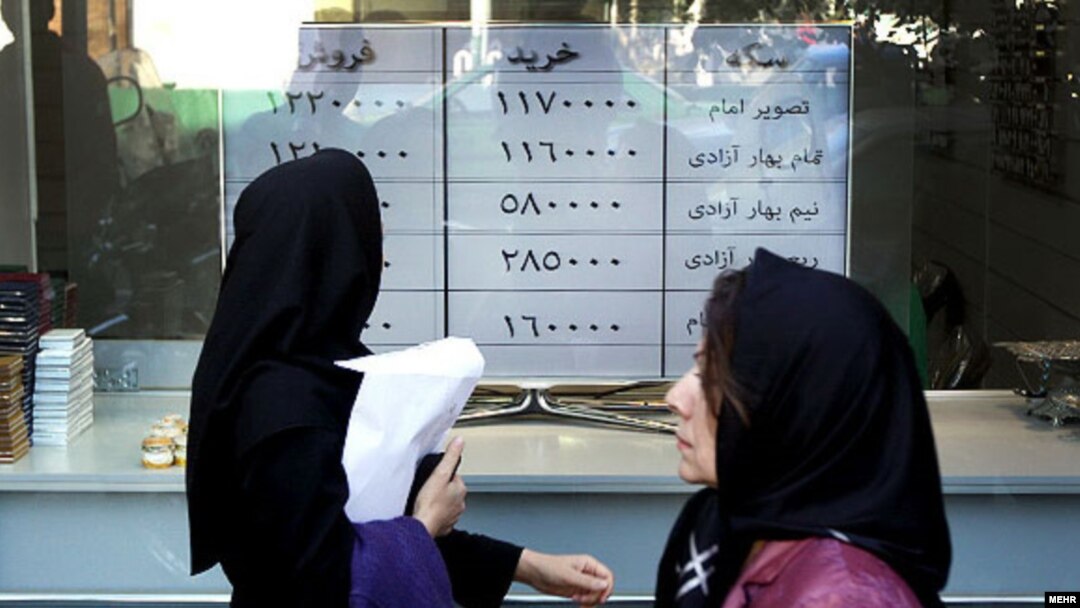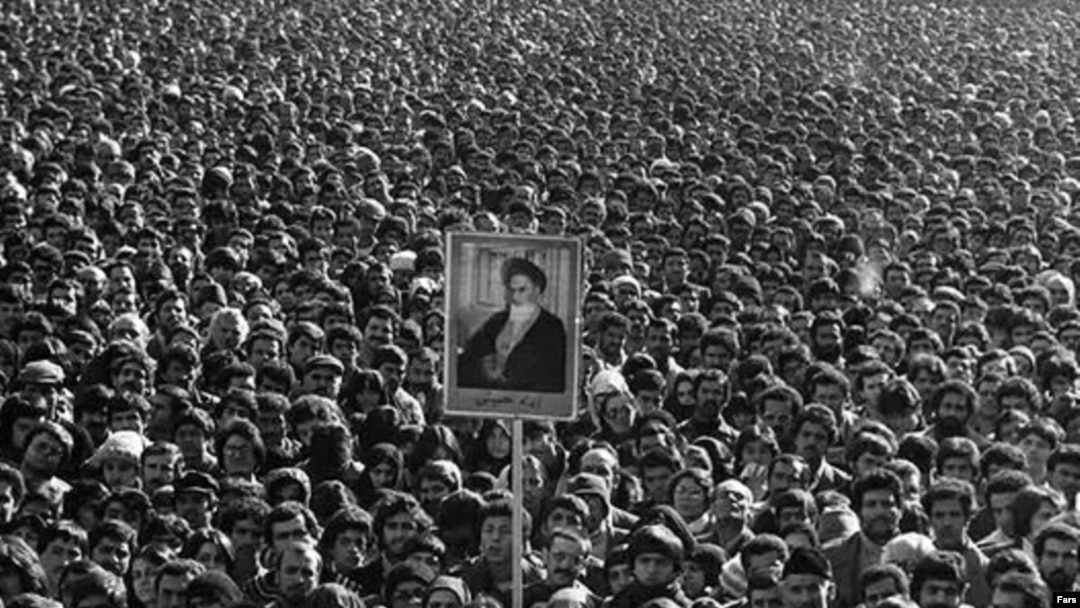How many lashes can a woman receive for improper dress? How much meat can a teacher's salary buy? How many people have been stoned to death for adultery? Thirty-five years after Ayatollah Ruhollah Khomeini took power in Iran, RFE/RL's Golnaz Esfandiari looks at the 1979 Islamic Revolution by the numbers.
0
The number of women working as judges in Iran today. Before the revolution several women, including future Nobel Peace Prize winner Shirin Ebadi, served as judges. After the Islamization of the judicial system, women were banned from practicing as judges and their rights were significantly curtailed under the law.
1
Motto of the revolution: "Independence, Freedom, Islamic Republic." Thirty-five years later, critics argue that while Iran has succeeded in establishing its independence, freedom remains elusive and Islamic principles are upheld only selectively.
10
The number of days each year that celebrate the revolution. They are called "The Ten Days of Dawn" -- marking the return of Ayatollah Khomeini from exile on February 1, 1979, and ending when he seized power on February 11. Some disillusioned Iranians, however, refer to this period as "The Ten Days of Torment."
28
The kilograms of meat an average teacher's salary in Iran can buy per month. Before the revolution, a teacher could buy six times that amount of meat, making half the salary.

The inflation rate today, according to official figures. Just prior to the revolution, inflation in Iran stood at about 10 percent.
60
The percent of all university students who are women. Before the 1979 revolution, women accounted for only about 20 percent of university entrants. One reason given for the marked increase is the greater number of girls from conservative families pursuing a university education. But the numbers shield current attempts to impose quotas to limit the number of women at universities and prevent them from studying certain subjects.
70
The number of people stoned to death on adultery charges since 1980, according to Human Rights Watch. Stoning, as well as other forms of Islamic punishment such as amputation, were introduced after the revolution. Women are believed to receive the majority of stoning sentences.
74
The number of lashes a woman can receive for not fully respecting the Islamic dress code in public. The code requiring women to cover their hair and body was introduced after the revolution.
86
Iran's rating, equal with Angola and just below North Korea, in terms of travel freedom. According to the 2013 visa-restriction index compiled by Henley & Partners, Iran's passport is one of the world's worst for entering another country without a visa, in part because of the Islamic republic's association with terrorism and isolation. Before the revolution, Iranians faced fewer travel restrictions and could travel to a number of European countries without a visa.
136
The number of Baha'i citizens in jail on charges related to their beliefs. Since the revolution, 222 Baha'is have been executed in Iran, according to the Baha'i International Community. Baha'is have faced persecution in Iran since the founding of their faith in the mid-19th century. However, rights activists say the repression of Baha'is, including economic and social exclusion, became systematic and state-organized after the revolution.
200 to 250
The number of functional cinemas in Iran. Under the shah, the number of cinemas was about double the number operating in Iran today. Some were destroyed during the revolution, others were shut down, and some were converted for use for religious purposes.
444
The number of days American hostages were held in Iran after the revolution.
624
The number of people executed in Iran in 2013, according to figures released by the Iran Human Rights Documentation center. For years Iran, which often uses capital punishment against drug traffickers, has ranked among the top executioners in the world. The death penalty was in place prior to the revolution, but was not used nearly to the extent that it is today and did not include public hangings.
The number of political prisoners today, including 35 journalists, according to figures by the Committee to Protect Journalists. Before the revolution, there were reportedly between 3,000 to 10,000 political prisoners in Iran, although some attribute the lower figures today to the greater use of the death penalty by the Islamic republic.
3,000
The number of Iranian toumans that will get you one U.S. dollar today. Iran's currency has lost more than 60 percent of its value in the past year. Prior to the revolution, the exchange rate was about seven toumans to the dollar.
70,000
The number of mosques, countrywide. About 20,000 mosques were built after the revolution, but observers suggest that Iranians have become more secular, particularly the younger generation. Officials have expressed concern that young Iranians do not hold religious and revolutionary values.
150,000
The number of talented and educated Iranians who leave the Islamic republic each year in search of a better future. A huge brain drain took place after the 1979 revolution and a wave of emigration followed the controversial 2009 presidential election, which was accompanied by increased state repression of the political opposition.
0
The number of women working as judges in Iran today. Before the revolution several women, including future Nobel Peace Prize winner Shirin Ebadi, served as judges. After the Islamization of the judicial system, women were banned from practicing as judges and their rights were significantly curtailed under the law.
1
Motto of the revolution: "Independence, Freedom, Islamic Republic." Thirty-five years later, critics argue that while Iran has succeeded in establishing its independence, freedom remains elusive and Islamic principles are upheld only selectively.
10
The number of days each year that celebrate the revolution. They are called "The Ten Days of Dawn" -- marking the return of Ayatollah Khomeini from exile on February 1, 1979, and ending when he seized power on February 11. Some disillusioned Iranians, however, refer to this period as "The Ten Days of Torment."
28
The kilograms of meat an average teacher's salary in Iran can buy per month. Before the revolution, a teacher could buy six times that amount of meat, making half the salary.

People walk in front of currency exchanges in Tehran.
38The inflation rate today, according to official figures. Just prior to the revolution, inflation in Iran stood at about 10 percent.
60
The percent of all university students who are women. Before the 1979 revolution, women accounted for only about 20 percent of university entrants. One reason given for the marked increase is the greater number of girls from conservative families pursuing a university education. But the numbers shield current attempts to impose quotas to limit the number of women at universities and prevent them from studying certain subjects.
70
The number of people stoned to death on adultery charges since 1980, according to Human Rights Watch. Stoning, as well as other forms of Islamic punishment such as amputation, were introduced after the revolution. Women are believed to receive the majority of stoning sentences.
74
The number of lashes a woman can receive for not fully respecting the Islamic dress code in public. The code requiring women to cover their hair and body was introduced after the revolution.
Tehran police round up women for their "inappropriate" dress in July 2012.
86
Iran's rating, equal with Angola and just below North Korea, in terms of travel freedom. According to the 2013 visa-restriction index compiled by Henley & Partners, Iran's passport is one of the world's worst for entering another country without a visa, in part because of the Islamic republic's association with terrorism and isolation. Before the revolution, Iranians faced fewer travel restrictions and could travel to a number of European countries without a visa.
136
The number of Baha'i citizens in jail on charges related to their beliefs. Since the revolution, 222 Baha'is have been executed in Iran, according to the Baha'i International Community. Baha'is have faced persecution in Iran since the founding of their faith in the mid-19th century. However, rights activists say the repression of Baha'is, including economic and social exclusion, became systematic and state-organized after the revolution.
200 to 250
The number of functional cinemas in Iran. Under the shah, the number of cinemas was about double the number operating in Iran today. Some were destroyed during the revolution, others were shut down, and some were converted for use for religious purposes.
444
The number of days American hostages were held in Iran after the revolution.
624
The number of people executed in Iran in 2013, according to figures released by the Iran Human Rights Documentation center. For years Iran, which often uses capital punishment against drug traffickers, has ranked among the top executioners in the world. The death penalty was in place prior to the revolution, but was not used nearly to the extent that it is today and did not include public hangings.
A soldier prepares a noose ahead of a public hanging.
1,000The number of political prisoners today, including 35 journalists, according to figures by the Committee to Protect Journalists. Before the revolution, there were reportedly between 3,000 to 10,000 political prisoners in Iran, although some attribute the lower figures today to the greater use of the death penalty by the Islamic republic.
3,000
The number of Iranian toumans that will get you one U.S. dollar today. Iran's currency has lost more than 60 percent of its value in the past year. Prior to the revolution, the exchange rate was about seven toumans to the dollar.
70,000
The number of mosques, countrywide. About 20,000 mosques were built after the revolution, but observers suggest that Iranians have become more secular, particularly the younger generation. Officials have expressed concern that young Iranians do not hold religious and revolutionary values.
150,000
The number of talented and educated Iranians who leave the Islamic republic each year in search of a better future. A huge brain drain took place after the 1979 revolution and a wave of emigration followed the controversial 2009 presidential election, which was accompanied by increased state repression of the political opposition.


